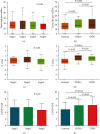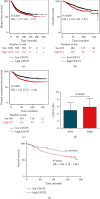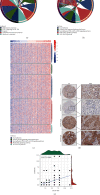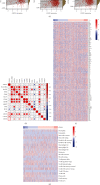Overexpression of CDCP1 is Associated with Poor Prognosis and Enhanced Immune Checkpoints Expressions in Breast Cancer
- PMID: 36090897
- PMCID: PMC9452972
- DOI: 10.1155/2022/1469354
Overexpression of CDCP1 is Associated with Poor Prognosis and Enhanced Immune Checkpoints Expressions in Breast Cancer
Abstract
CUB-domain containing protein 1 (CDCP1) is a transmembrane protein acting as an effector of SRC family kinases, which play an oncogenic role in multiple human cancers. However, its clinical and immune correlations in breast cancer (BrCa) have not been explored. To define the expression, prognostic value, and potential molecular role of CDCP1 in BrCa, multiple public datasets, and an in-house cohort were used. Compared with paratumor tissue, CDCP1 was remarkably upregulated in the tumor tissues at both mRNA and protein levels. In the in-house cohort, CDCP1 protein expression was related to several clinicopathological parameters, including age, ER status, PR status, molecular type, and survival status. Kaplan-Meier analysis and Cox regression analysis exhibited that CDCP1 was an important prognostic biomarker in BrCa. In addition, enrichment analysis uncovered that CDCP1 was not only involved in multiple oncogenic pathways, but correlated with overexpression of immune checkpoints. Overall, we reported that increased expression of CDCP1 is a favorable prognostic factor in patients with BrCa. In addition, the correlations between CDCP1 and immune checkpoints provide a novel insight into the adjuvant treatment for immune checkpoint blockade via targeting CDCP1.
Copyright © 2022 Jinlu Zhao et al.
Conflict of interest statement
The authors declare that have no conflicts of interest.
Figures






References
LinkOut - more resources
Full Text Sources
Other Literature Sources
Research Materials
Miscellaneous

